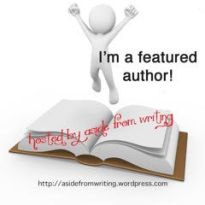
Art by Alison Hunt
(I end the three big sections by touching on short stories. These tend to work differently than full novels, so I felt they should get their own entries. This is part of the one for the ‘World’ section.)
Before we move on to the ‘Character’ section of this book, I’m going to touch on the challenge of world-building on a smaller scale. Spoiler: I’m going to get into short stories at the end of each section. The reason is because these types of pieces operate differently than novels and series. You have more restrictions, but also more freedom depending on how you look at the situation. Also, authors of any genre may indulge in a short story when they have an idea they know can’t last for a novel, but feel it is worth telling. Some even use short stories to enhance their established worlds by introducing concepts and locations that will appear down the road. Regardless of the reason, there is an itch to scratch here, which still requires some level of world-building.
The difficulty with a short story really stems from having a limited amount of time and space. If you make it too long then you’re into novella and novel territory, which can result in stretching what you have to make yourself feel comfortable. There are these weird areas of page and word amounts where authors aren’t sure what they made, so they will either butcher or extend what they have to get out of that zone. It can work to make a stronger story, but it’s more likely to come off as either empty or padded. This is why many find it difficult to do a short story, but a novel is easy. With the latter, you don’t have to worry about crashing through a wall and finding yourself in the ‘wrong’ category.
People typically go by word count too, which can add to the confusion and attempt to fudge the numbers. For example, people will say a short story is less than 20,000 words and a novella is between 20,000 and 40,000 words. An author aiming for a short story may focus more on the word count than the actual content. In truth, these are guidelines and there is plenty of wiggle room. Your average reader won’t know the difference between a short story and a novella. They just want to enjoy the story.
We’re going to stay on the disadvantage side in order to end on a high note. The limitation of time and space means you have to work with less. Events may have to move faster because you can’t have much in the way of meandering scenes. The main plot has to be moving at all times. Subplots need to be ignored or intertwined with the central story in a way that they can both advance with the same actions. For example, one of the stories I wrote in The Life & Times of Ichabod Brooks has the titular character and an enemy trapped on an island from the beginning. There is the main story of finding a way to escape and two subplots, which are them getting along and them surviving a strange beast. To escape, they need to advance the subplots, which coils all three together instead of having them handled one at a time like you may see in a novel.
To achieve a quicker pace, you can use these three tools:





Really helpful information, especially about story and novella lengths. World building is hard in the shorter form, as you mentioned. But a book of short stories like your Ichabod Brooks stories allows you more room.
I love when novelists go the extra mile by writing short stories with characters who appear in novels. (Like Agatha Christie’s books of short stories involving her detective characters.)
LikeLiked by 1 person
Thanks. I do enjoy the fun crossovers.
LikeLiked by 1 person
The CW had a ton of those with their superhero crosswovers in the Arrowverse. 😄
LikeLike
I agree with you. Crossovers are so much fun and I do it frequently. Sometimes it’s a participating character, but I use a lot of Easter Eggs for fun, too.
LikeLike
The point you made about word counts is a good one. I think too much time is spent on word count right sizing for short stories.
LikeLike
Thanks. 😊
LikeLike
I still connect to word count. I think it matters with things like The Hat Series. These all come in around 40,000. Since it’s an ongoing series, I think readers expect something in that area. The rest of my stories I don’t care as much, other than not overdoing it with 300K or so.
LikeLike
Word count is always strange. Authors care a lot. Readers just go by page count and the size of the physical book.
LikeLiked by 1 person
True, but I don’t want to try selling something that’s only 20K unless it’s in a collection. I try to have some kind of goal in mind.
LikeLike
I’ve seen those types of things go for 99 cents. It was a popular trend on Amazon a while back.
LikeLiked by 1 person